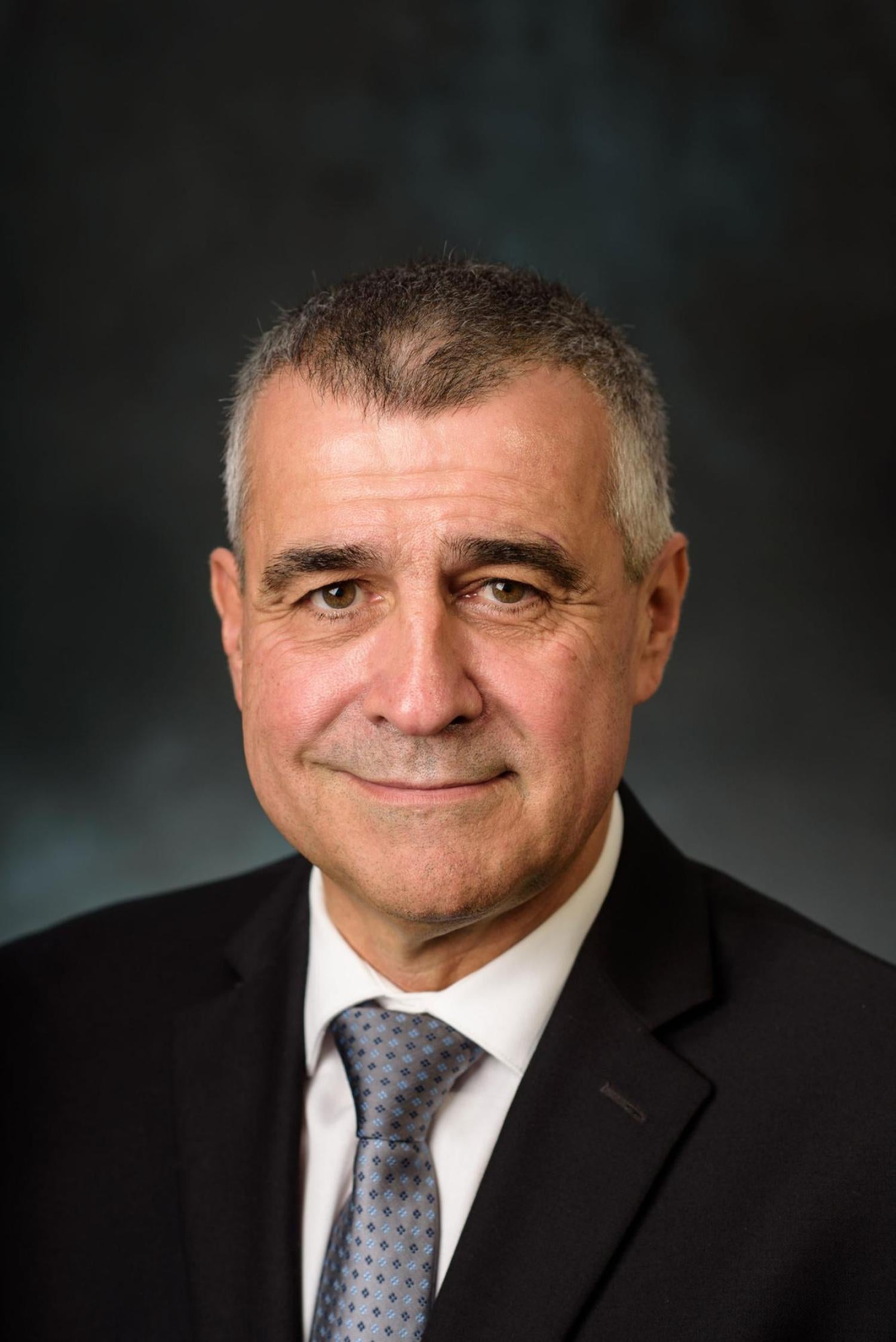Seminar: Vibration Phenomena In Imperfect Bladed Disk Structures - Apr. 7

Christophe Pierre
Professor, Department of Mechanical Engineering, Stevens Institute of Technology
Friday, Apr. 7 | 11:45 a.m. | AERO 120
Abstract: Vibration localization occurs in spatially repetitive structures whose ideal periodicity is broken by small imperfections, or disorder. Local irregularities can alter drastically the global dynamics, by localizing vibration modes to small geometric regions and inhibiting the propagation of incident waves. Remarkably, this is achieved without dissipation in the structure. Localization is particularly acute for bladed disk structures, which are fundamental components of numerous turbomachines such as those in powerplants and jet, rotorcraft, and rocket engines, resulting in extreme sensitivity of free and forced responses to unavoidable blade mistuning, including high blade response amplitudes and stresses, cracks and ultimately failure.
In this presentation, the physical mechanism for localization is first examined, after which the implications for bladed disk structures are explored. A key attendant issue is the generation of reduced-order models (ROM), which are necessary to calculate the statistics of the vibratory response of bladed disks with random mistuning. A ROM based on a component mode mistuning approach is developed, and the resulting design tool can be used to mitigate the deleterious effects of mistuning on high cycle fatigue. The ROM successfully handles large mistuning situations, including rogue and fractured blades, intentional and geometric mistuning, and blade and disk design changes. It is well suited to the identification of blade mistuning from response measurements, and experimental results are shown for a NASA compressor stage prototype. Finally, recent research on non-smooth unilateral contact rotor-stator interactions is presented, motivated by the advent of technologies that seek to minimize operating clearances. Computational modeling and analysis tools are developed to predict critical structural interactions, including the removal of abradable material at blade-casing interfaces.
Bio: Christophe Pierre was appointed as the Jess H. Davis Endowed Chair in Mechanical Engineering at Stevens Institute of Technology in 2021. A former Provost of Stevens, he is an recognized scholar in vibrations, structural dynamics and nonlinear dynamics, where he is known for pioneering research on mode localization in disordered periodic structures, nonlinear normal modes, and mistuned cyclic systems. His vibratory response prediction codes have been licensed widely to major jet engine manufacturers worldwide, the U.S. Air Force and NASA. He is the author or coauthor of more than 300 refereed publications and has graduated 35 doctoral students from his research group.
He is a Fellow of the American Society of Mechanical Engineers, the American Academy of Mechanics and the National Academy of Inventors, and he received ASME’s N.O. Myklestad Award in 2005 for his innovative work in vibration localization. Christophe Pierre joined Stevens in 2016 after previously serving as Vice President for Academic Affairs at the University of Illinois, Dean of the Faculty of Engineering at McGill University and Associate Dean and chaired professor at the University of Michigan. He received his Ph.D. in Mechanical Engineering and Materials Science from Duke University in 1985, his Master’s in Mechanical and Aerospace Engineering from Princeton University in 1984 and his Diplôme d’Ingénieur from Ecole Centrale de Paris in Aerospace Engineering in 1982.

